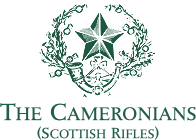 |
www.cameronians.org click here to print this page |
|
|
|
The Story of the Regiments - The Covenanters
THE COVENANTERS
There are two documents that have a famous place in the history of Scotland:
First - The National Covenant, drawn up by Alexander Henderson in 1638 on the lines of the Covenant of 1581. It pledged those who signed it to maintain the principles of the Protestant Reformation and the Presbyterian faith and discipline. But it contained this important clause—”We promise and swear that our means and lives stand to the defence of our Dread Sovereign the King’s Majesty, his person and authority, in the defence and preservation of the aforesaid true religious liberties and laws of the Kingdom.” It was signed by many of the nobles and gentry, with the Marquis of Montrose at their head, and by 300 ministers and a great multitude of the people.
Second - The Solemn League and Covenant. It dates from 1643, and it was virtually an agreement between the Presbyterians in Scotland and the Presbyterians in England to unite in defending the civil and religious liberties of the two Kingdoms.
The Scottish Covenanters were the men and women who stood for the principles laid down in these two great documents; and their loyalty to these principles was put to a severe test. Presbyterianism did not find favour with the Stewart Kings, and the crisis came when Charles II was established on the throne in 1660. Charles II had repeatedly signed the Covenants and sworn to be faithful to them, but he set himself at once to make them null and void. As King, he claimed to have the right of imposing the Episcopal form of Church Government upon the Scottish people. The Scottish Parliament bowed to his will, and the Covenants were declared to be unlawful. Thereafter, things went from bad to worse. Over 300 Presbyterian ministers had to leave their churches and their homes, and, as far as possible, Episcopal Curates were brought in to fill their places. The Covenanters were driven to worship in the open air; but by and by their field meetings, or “Conventicles,” as they were called, were forbidden under heavy penalties. Then came exactions and persecutions of the most grievous kind, which culminated in the horrors of the “KillingTime.” The story is too long to be told here, but it makes one of the saddest pages of Scottish history.
Source: '300 Years of Service' published by the Regimental Trustees
www.cameronians.org